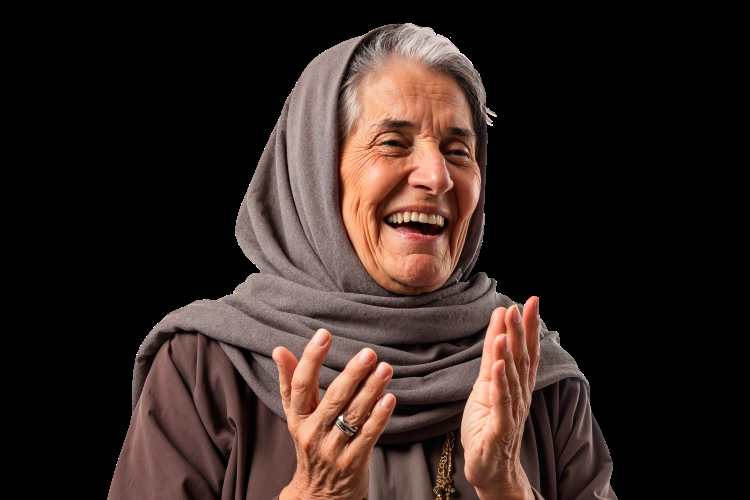Sabil Al-Quran
What Age Can a Woman Stop Wearing Hijab
Have you ever thought about the journey of women who choose to wear the hijab, and What Age Can a Woman Stop Wearing Hijab? For many Muslim women, the hijab is more than just a piece of fabric; it represents their beliefs and values.
Do Muslim girls have to wear a hijab The answer to this question lies in the teachings of the Quran and Hadith, where modesty is emphasized for both men and women.
For many, wearing the hijab is seen as an obligation, reflecting devotion to Allah and a commitment to the principles of Islam. However, the decision is ultimately personal, and each woman’s relationship with the hijab is shaped by her faith and understanding.
One question that often comes up is, “when can a woman take off her hijab” This question is not just about age; it opens the door to discussions about identity, faith, and personal choice.
As women move through different stages of life, they face various challenges and decisions, especially regarding the hijab.
From the time they reach puberty to the changes that come with growing older, each moment is filled with significance.
In this exploration, we will look at the different perspectives on this question, examining the cultural influences and personal experiences that shape a woman’s decision to wear or stop wearing the hijab.
At Sabil Al-Quran, we aim to address the various perspectives surrounding this topic, shedding light on the considerations that influence a woman’s decision to wear or remove the hijab, regardless of her age.
Understanding The Hijab In Islam
The hijab is more than just clothing; it represents a commitment to one’s faith and an expression of beliefs. What age do Muslims wear hijab? In Islam, wearing the hijab is generally seen as a requirement for women who have reached puberty.
When Can A Woman Take Off Her Hijab
There has been growing discussion in recent times about who is permitted to see a woman without her hijab, despite the fact that Islamic rulings on this issue are well established and clearly defined.
Below is a clear outline of the situations in which a woman is allowed to remove her hijab
Before Puberty
In Islamic teachings, the hijab is a religious obligation for adult Muslim women. The general rule is that a woman is required to wear the hijab from the time she reaches puberty1 and continues to do so throughout her life.
In Privacy
You can remove your hijab in private spaces such as your home, bedroom, or bathroom. These areas are considered safe environments where non-mahram men are not present, allowing you to relax and feel at ease. This privacy gives you the freedom to be comfortable, tend to personal needs, and express yourself without the obligation of maintaining public modesty. It’s a balance between observing religious guidelines and enjoying personal space with dignity.
Among Women
You can take off your hijab in the presence of female family members, such as your mother, sister, daughter, or niece. These are trusted relationships where the rules of hijab do not apply. Similarly, in women-only settings like a beauty salon, spa, or private gatherings where no non-mahram men are present, it is also permissible to remove the hijab.
However, modesty should still be observed. Even among women, Islam encourages dressing respectfully and avoiding unnecessary exposure, especially in the presence of those who may carry jealousy, gossip, or ill intentions. Maintaining a dignified appearance helps protect your privacy and upholds the spirit of haya (modesty) in all environments.
In Front of Immediate Family (Mahrams) & Mahram male relatives, such as:
- Father
- Brothers
- Sons
- Uncles (maternal and paternal)
- Grandfathers
- Marital Family (Only if Mahram)
- Some marital relatives are mahram and do not require hijab, such as:
- Father-in-law
- Stepchildren (under certain conditions). Others, like a brother-in-law, are not mahram and hijab must be worn in their presence.
- Milk Brothers and Kinship through Breastfeeding (Rada’ah)
- If a woman was breastfed by another woman under Islamic rulings, the milk siblings and their father are considered mahram and hijab is not required.
Situations When a Woman Should Keep Her Hijab On:
In Front of Non-Mahram Men
This includes men like cousins, brothers-in-law, and unrelated individuals.
During Ablution (Wudu) in Public or Mixed Settings
If non-mahram men are present, the hijab must remain on while performing wudu. It can be removed in a private space or among mahrams.
During Sports or Physical Education in Mixed or Public Settings
Hijab should be maintained if the setting includes non-mahram men. It can be removed in women-only or private spaces.
what age can a woman stop wearing hijab?

The question of when a woman can stop wearing hijab does not have a specific age defined in Islam or mentioned explicitly in the Quran.
However, there are guidelines provided in the Islamic texts that can help clarify this matter, especially concerning elderly women.
In Surah An-Nur, Allah addresses the elderly women with a significant statement:
“And the older women among the women who do not expect marriage – there is no blame upon them for putting aside their outer garments without adornment. But to remain chaste is better for them. And Allah is Hearing and Knowing.”
وَٱلْقَوَٰعِدُ مِنَ ٱلنِّسَآءِ ٱلَّٰتِى لَا يَرْجُونَ نِكَاحًا فَلَيْسَ عَلَيْهِنَّ جُنَاحٌ أَن يَضَعْنَ ثِيَابَهُنَّ غَيْرَ مُتَبَرِّجَٰتٍۭ بِزِينَةٍ وَأَن يَسْتَعْفِفْنَ خَيْرٌ لَّهُنَّ وَٱللَّهُ سَمِيعٌ عَلِيمٌ
Surat An-Nur(24:60)
This verse highlights that women who have reached an age where they no longer seek marriage have the option to relax the strict requirements of hijab, provided they do not adorn themselves in a way that would attract attention.
The term “القواعد” (al-qawa’id) refers specifically to elderly women who have no desire for marriage due to their advanced age. The Quran indicates that it is permissible for them to uncover their faces and hands, given that they do not engage in excessive beautification or adornment.
The stipulation that they should not be “مُتَبَرِّجاتٍ بِزِينَةٍ” (tabarruj), meaning to display their beauty and adornments, reinforces the idea that modesty remains a fundamental principle in Islam.
While elderly women are allowed some flexibility regarding hijab, it is important to note that refraining from uncovering their hair and remaining modest is considered better.
Moreover, the decision to wear or remove the hijab ultimately comes down to personal choice, individual circumstances, and one’s interpretation of Islamic teachings.
Many factors can influence this decision, including cultural background, personal beliefs, and the context in which one lives.
Women may choose to continue wearing the hijab as a lifelong commitment to their faith, while others might find it appropriate to adjust their practices as they grow older.
It is essential for women to consider their motivations and intentions behind wearing or removing the hijab.
Engaging in self-reflection and seeking guidance from knowledgeable individuals within their community can help them navigate this personal decision.
Ultimately, Islam emphasizes the importance of individual agency and sincerity in one’s actions, encouraging women to act in a way that aligns with their understanding of faith and modesty.
Join our Quran Memorization and Recitation Course and strengthen your faith through the words of Allah.
Whether you’re just starting or want to perfect your recitation, our structured program helps you connect deeply with the Quran and stay consistent on your path to memorization.
Cases Should a Muslim Woman Consider Removing Her Hijab for necessity
The hijab that Allah has prescribed for adult Muslim women is, like other obligatory acts of worship, not permissible to abandon except in cases of inability or compelling necessity. This is based on Allah’s saying:
{إِلَّا مَا اضْطُرِرْتُمْ إِلَيْهِ}
“Except for that to which you are forced.”
surat al-an’am (6:119)
In Islam, the hijab is regarded as a mandatory practice for Muslim women, serving as a symbol of modesty and faith. However, there are certain exceptional circumstances in which a woman may need to reconsider wearing her hijab.
The primary situation where a Muslim woman might consider removing her hijab is when her life or safety is at risk. In such cases, preserving life takes precedence, as Islam prioritizes the sanctity of life over other obligations.
What Does The Quran Say About Women? discusses the importance of protecting a woman’s well-being in such circumstances. Decisions about removing the hijab should be made with careful consideration of one’s safety, mental well-being, and the potential consequences.
It is advisable to seek guidance from trusted sources or engage in prayer and reflection before making a decision.
Do Old Women have to Wear Hijab After Menopause
Yes, women still have to wear the hijab after menopause. While there is a verse in Surah al-Nur that indicates older women may have some leniency regarding outer clothing, the hair is still considered part of their ‘awra’ (nakedness) and must be covered in the presence of non-Mahram men.
Therefore, older women are required to maintain hijab 2 by covering their hair, although they may choose to expose their faces and hands, provided they do not adorn themselves and avoid attracting unwanted attention.
How to Understand More About Hijab Teachings and Rules
If you’re looking to deepen your understanding of the teachings and rules surrounding the hijab, there are many resources available to guide you on this journey. Sabil Al-Quran offers a range of courses focused on Islamic teachings, studies, These courses are designed to help you learn more about Islam and its principles, including the significance of the hijab and its requirements. Through engaging lessons and expert instruction, you can gain a clearer insight into the religious and cultural aspects of the hijab, as well as its role in a Muslim woman’s life.
Conclusion: When Can A Woman Take Off Her Hijab?
The choice about when or if a woman stops wearing the hijab is deeply personal and can vary greatly among individuals. It is shaped by cultural influences, personal beliefs, and interpretations of faith.
Each woman’s relationship with the hijab is unique, reflecting her experiences, values, and connection to her beliefs. Whether she decides to continue wearing the hijab or to stop, what is important is that her choice comes from a place of understanding and conviction. What Does The QURAN Teach? In the Quran, the hijab is presented as a symbol of modesty and a means of maintaining dignity.
The Quran encourages both men and women to dress modestly, with the hijab being a specific expression of this for women. What age can a woman stop wearing hijab? The Quran does not specify an age, leaving the decision to personal faith and circumstances. It serves as an outward sign of devotion to Allah, but the choice to wear or stop wearing it remains deeply individual.
When can a man see a woman without hijab?
Mahram men in your immediate family include your father, brothers, and grandfathers from both sides. These men can see you without a hijab because they are permanently unlawful to marry. A stepfather is also considered a mahram, as marriage with him is not permissible, so he may also see you without a hijab.
What is the average age to wear a hijab?
The obligation to wear the hijab begins when a girl reaches puberty, which is typically marked by the start of her menstrual cycle. This age varies but generally falls between 9 and 15. Most girls begin by wearing a white or black chador or hijab. In some cultures, around the ages of 13 to 15, wearing a burka may also become customary.
What is the difference between a hijab and a burka?
The hijab covers the head, neck, and shoulders while leaving the face visible. In contrast, the burka covers the entire body, including the face, with a mesh screen for the eye.


